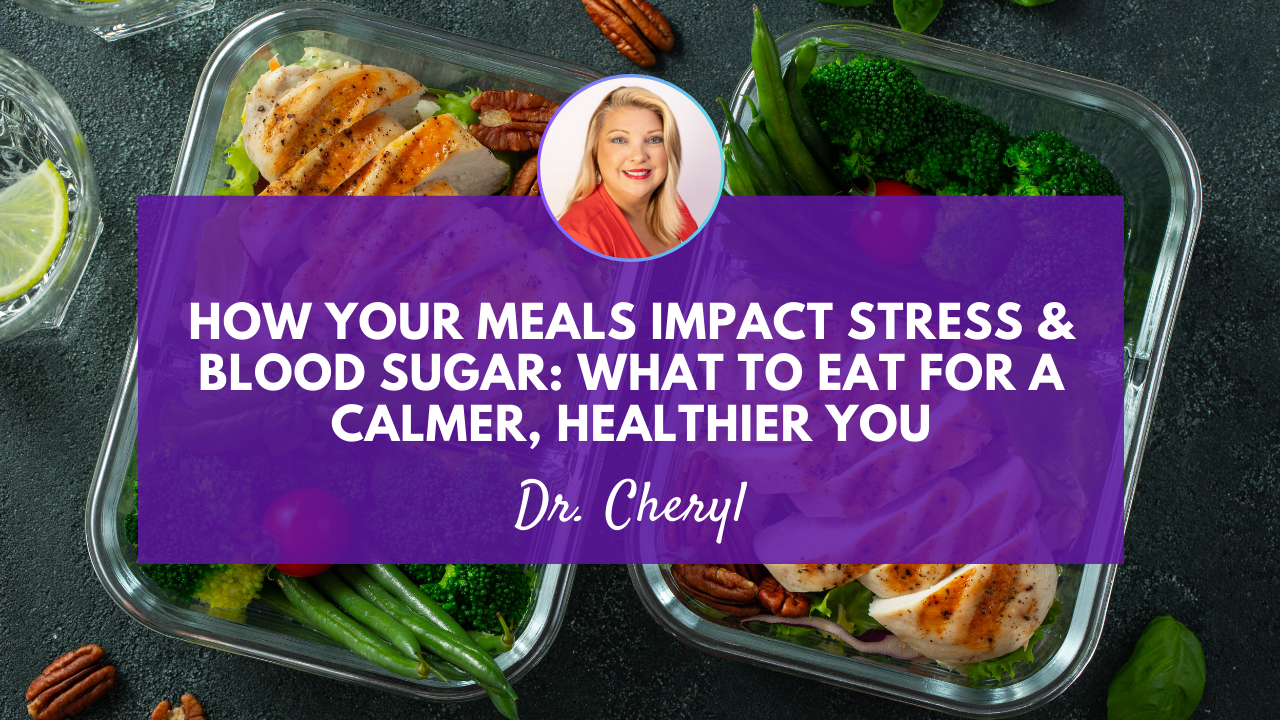
How To Stabilise Your Blood Sugar Levels With Food: 3 Must Know Guidelines
Before we begin, it’s important to understand what’s normal for blood sugar levels.
Blood sugar levels are measured differently in the US and Canada.
If you live in Canada, according to the Diabetes Care Community, your blood sugar levels before a meal should be 4-7 mmol/L. Two hours following the start of a meal, your blood sugar level should be 5-10 mmol/L.
In the US, your blood sugar before a meal should be 80-130 mg/dL, and two hours after the start of a meal, should be less than 180 mg/dL.(1)
ACTION STEP 1:
Say Yes To Diabetes Friendly Food Allies That Keep Your Blood Sugar Levels On Track
I like to refer to foods that are full of nutrients, that help you keep blood sugar levels steady and your energy up, as FOOD ALLIES - so your first action step is to incorporate more food allies into your day. One of the easiest ways to discover food allies is to refer to the glycemic index, or GI scale, which outlines foods that are low, medium and high in carbohydrates.
Special Note: vegetables that have no starch, such as lettuce, and foods with no starch/carbohydrates, such as meats, chicken and fish, are not included on the glycemic index.
Foods high on the GI scale, are high in carbohydrates and raise blood sugar levels quickly. Foods low on the GI scale are opposite. They are low in carbohydrates, so processed by your body slower, with very little or no sugar spikes. That means all day energy while keeping your blood sugar levels steady.
When you search for glycemic indexes on Google, you will see a few different options. Some of these charts zone in on specific types of foods, such as fruit, while others give a wider spectrum of food categories.
Examples of foods that have a low glycemic index, and thus are slower to digest, include carrots, broccoli and red peppers. The good news is that these 3 vegetables alone mix really well together in almost any salad, soup, stir-fry or stew. Other slow to digest options are grains such as steel cut oats – which is one of my favourites, beans and legumes.
In general, you also want to select foods that are higher in fiber. The foods mentioned above are excellent choices, as are other whole grains and vegetables such as buckwheat, quinoa, collard greens and kale.
This final tip might surprise you – consider adding more fruit to your diet. Sugars in fruit are from natural sources and fruits are packed with fiber and nutrients our bodies need. Some fruits will raise your blood sugar levels more than others, so be sure to refer to that GI index and choose low GI fruits, such as pears, berries, kiwi, plums, and apples. Enjoy them on their own, mix them together, try poaching with cinnamon or adding to your power fruit bowls, smoothies, salads and more.
ACTION STEP 2:
Recognize & Avoid Food Triggers (Foods That Spike Blood Sugars)
Learning how to recognize foods that can spike or cause high blood sugar levels, is critically important when you have diabetes. I call these FOOD TRIGGERS because they trigger negative body responses as a result of the sudden rush of sugar. That’s why the second action step I want you to take is to learn more about what trigger foods are, and do as much as you can to avoid or substitute them with diabetes friendly food allies.
Food triggers include foods high on the GI scale, low in fiber, that digest very quickly, and of course, foods that are high in natural or added sugar. Examples of food triggers are fruits like overripe bananas and pineapples, some dried fruits such as raisins and dates, white bread, white rice, and baked potatoes.
Working with food triggers can be tricky. For example, you wouldn’t want to avoid all dried fruit because some dried fruit are actually low on the GI scale and can be very good for you, such as dried mulberries. Likewise you may believe that mangos, because they are sweet, must be high in sugar so should be avoided – but then you’d be missing out on an incredibly healthy and tasty treat because mangos are actually low GI fruits, as are sweet honeydew melons, oranges and peaches.
If you don’t have access to a GI index when shopping, a good rule of thumb is to avoid food found in the inside aisles of your grocery - which usually contain packaged foods. Packaged foods are typically low in nutrition or high in sugar such as packaged cookies or other packaged sweets, most breakfast cereals and packaged junk food such as chips. On top, as reported by The Guardian, food packaging contains more than 3000 potentially harmful chemicals and scientists still don’t know the full effects these will have on our bodies or when mixed together.2 Just one more reason to avoid the inside aisles when grocery shopping.
Some other not so obvious things to avoid include certain vegetables, so again, I’d like to remind you to always refer to your GI charts. In general, you’ll want to limit or avoid vegetables that are high in starch (which means high in carbs) which include things such as potatoes, corn and peas. It doesn’t mean you should never eat them; it just means when you do, manage your portion size appropriately, eat it alongside low GI vegetables, and be sure to measure your blood sugar level 2 hours following your meal.
ACTION STEP 3:
Add Quality Protein Every Day
Protein helps overall glucose management, so your third action step is to:
- Understand how much protein your body needs and
- Discover ways to add more protein to your diet
SIDE NOTE: An optimal diabetes-friendly, Dr. Cheryl approved, plating method includes protein, fats and carbohydrates. For more information on what an ideal diabetes plate looks like, stay tuned for an upcoming blog article where we’ll cover how to create a balanced diabetes plate.
It’s very important to be aware of the role that protein provides in stabilising your blood sugars. In fact, it’s best to have protein with every meal to help achieve those balanced blood sugars, help your body perform well and keep you feeling satiated throughout the day.
According to the National Library of Medicine, those with diabetes should not have less than 1g of protein per kg of body weight.3 So if you weigh 68kg, you will need to aim for 68g of protein per day. However, certain factors such as your activity level, or any other diseases, will also influence how much protein you should have each day.
Did you know that vegetarians are less likely to have diabetes than non-vegetarians? It’s because vegetarians learn how to add healthy grains, vegetables, nuts, beans etc. in combinations where they can still get protein, in a satisfying meal, that also happens to include all the foods we discussed that are diabetes friendly – foods that will improve blood sugar levels and insulin response. But generally, protein on its own won’t directly affect your blood sugar levels. It’s how you pair the protein that counts and avoiding protein sources that are high in saturated fats or high in cholesterol.
Great options for protein include fish; legumes such as lentils; beans; lean cuts of chicken, game food or beef; eggs; dairy and non-dairy alternatives such as soymilk.
Even though certain meats offer protein, they should still be limited or avoided as they can cause harm to our bodies in other ways. These include red meat (which is high in calories and saturated fats), fatty protein like bacon, or protein with additives and fillers that you don’t need such as hotdogs or sausages. Also, stay clear of fried or breaded meats or eating the skin on chicken.
Some of my favourite protein sources include protein powders in my smoothie, hummus, black bean dip, lentil soup, vegetable omelettes and salmon.
So now that you’ve learned the basics of food allies, food triggers and protein, you are off to a great start in making better decisions to get your blood sugar levels where they should be. Congratulations!
The good news is that there are many more things you can do to get steady blood sugar readings after each meal. My goal is to educate you on how blood sugar levels affect your body and empower you to make the decisions that will keep your A1Cs within healthy ranges, like mine are, over 95% of the time.
For even more tips and to keep up to date with our articles, free resources and comprehensive programs, be sure to join our thriving Facebook group at https://www.facebook.com/groups/holisticdiabetessolutions.
Now, it’s time for you to take action. What did you learn from this article that you intend to test out right away? Leave a comment and let me know!
ABOUT THE AUTHOR

Dr. Ac., C.H., RDH
Dr. Holistic Studies, Dr. Acupuncture
Diabetes Wellness Strategist & Coach
Creator & CEO of Holistic Diabetes Solutions
8 X International Best-Selling Author
As a woman living with diabetes for over 30 years, Dr. Cheryl understands the journey firsthand. When she was diagnosed, she received the same outdated advice her grandmother was given for over four decades, who relied primarily on medication, suffered from deteriorating health and eventually lost her life to diabetes. Fueled by this experience, Dr. Cheryl was compelled to seek a better way. Through countless research studies and trials, she developed the winning holistic approach: the Diabetes Success System which merges traditional wisdom with today’s best holistic self-care practices. It has revolutionized diabetes management by providing a trusted way to maintain consistent and predictable healthy blood sugar levels. Join the thousands of people worldwide who have been empowered by Dr. Cheryl's approach and start living your healthiest life.
Footnotes:
-
Diabetes Care Community. (2002) BLOOD SUGAR LEVELS IN CANADA. Retrieved from https://www.diabetescarecommunity.ca/living-well-with-diabetes-articles/blood-sugar-levels-in-canada/
-
The Guardian. (2022). MORE THAN 3,000 POTENTIALLY HARMFUL CHEMICALS FOUND IN FOOD PACKAGING. Retrieved from https://www.theguardian.com/world/2022/may/19/more-than-3000-potentially-harmful-chemicals-food-packaging-report-shows#:~:text=More%20than%203%2C000%20potentially%20harmful%20chemicals%20found%20in%20food%20packaging,-This%20article%20is
-
National Library of Medicine. (2011). PROTEIN CONTENT IN DIABETES NUTRITION PLAN. Retrieved from https://pubmed.ncbi.nlm.nih.gov/21207203/#:~:text=A%20protein%20intake%20of%200.8,in%20a%20diabetes%20meal%20plan.
__________________________________
PROFESSIONAL DISCLAIMER
The material and content contained in this material is for general health and educational information only. It is not intended to constitute medical advice or to be a substitution for professional medical advice, diagnosis or treatment. Users of this material should not rely exclusively on information provided for their own health needs. All specific medical questions or changes you choose to make to your medication or lifestyle (0r something like that) should be presented to your own professional healthcare provider.






